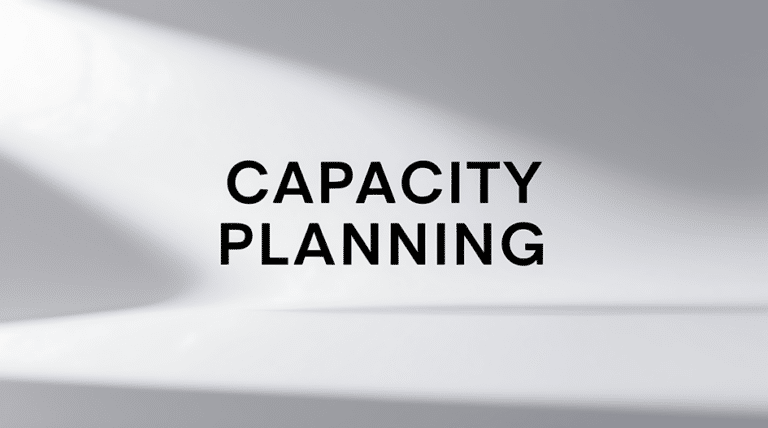Production and inventory planners are critical to today’s companies, helping maximize resources and boost productivity throughout the manufacturing process. Their work affects a number of other departments, from warehouses and production facilities to finance, sales, and logistics.
What do planners do all day?
The results of a planner’s work are visible in the form of ensuring that:
- Raw materials are available, optimizing production costs
- Stock levels are appropriate, optimizing storage costs
- Finished products are available, maximizing sales productivity
- Orders are optimally managed, maximizing cashflow
Top challenges of being a planner
For several years, I had the pleasure of working as a planner in a food company, and during this time I encountered a number of challenges that are common to the role.
If you’ve ever worked as a planner, you’ll know this feeling: dozens of unread messages are waiting in your email inbox, including messages from the sales department, suppliers, and R&D. Production and warehouse managers are standing in the door to discuss changes to the production plan, your Director reminds you of the overdue statement, and you can’t decide what to do first, because:
- Your ERP/MRP system lacks functional solutions—and as a result, all planning takes place in a spreadsheet with a semi-hand data import
- You cannot upload data from a spreadsheet into an ERP
- Sales forecasts deviate from real sales despite repeated updates
- Key data from unscheduled promotional campaigns keeps changing, further throwing off those forecasts
- To calculate the inventory level, you need to prepare additional average usage statements in your spreadsheet based on historical data and forecasts
- You do not have real-time visibility into potential problems as they occur—like items that are unavailable for production or shipping
- You must use additional tools to set up action reminders
- To present monthly, quarterly, or annual results, you need to spend additional time creating separate statements
- Spreadsheet data quickly grows out-of-date, so annual forecasts for raw materials also quickly grow out-of-date
- You must manually recalculate units of measure
ERP/MRP systems solved many problems in the past—moving from notebooks to computer-managed records represented a huge leap forward. And yet the need for further change has never been more apparent. Supply chains are very complex, each product has many different variations, customers expect to receive things sooner and sooner, and overall sales volatility causes numerous changes in demand.
The MRP system relies on multiple factors that are subject to disturbance:
- Forecasts that are inaccurate
- Orders that are variable and often have short lead times
- Production schedules that are frequently disturbed by breakdowns
- Product structure and stock that can change
- Deliveries in progress that often vary
- Item parameters like lead time, minimum order quantity, and packaging
As you can see, several elements that form the basis of MRP-calculated order recommendations are not constant. There is nervousness—after all that, I’m still not sure what, when, and in what quantity, I should order.
Introducing Replenishment+
Is there a better way to make material planning calculations? Yes!
Replenishment+, an inventory management program that’s compliant with the Demand Driven MRP methodology, and that I now help clients use to optimize their purchasing through my work as a consultant with Profitia.
How does Replenishment+ deal with volatility? By introducing inventory buffers that are related to average usage, lead time, and item volatility. Item volatility is a comparison of the deviation of individual usage with the average. Where the volatility is greater, you’ll need more inventory.
How does Replenishment+ get you out of spreadsheets? By providing information that’s always up-to-date, because it’s connected to the ERP and exchanges data several times a day. It’s a benefit that’s hard to overstate. Spreadsheets can solve some planning problems, but they also involve complex files that are burdensome and risky to use—if the computer freezes or shuts down, you might lose critical data.
Changes in forecasts and orders increase nervousness. Additionally, it may be difficult to distinguish when a forecast becomes an order. Unplanned promotional orders often have short lead times—we want to fulfil them to drive more revenue, but we may have a problem with the availability of raw materials.
Ideally, forecasts would be more accurate and higher stock levels easier to plan for. However, can this be reconciled?
In the Replenishment+ system, some orders (resulting from average usage) are already buffered. On the other hand, sales peaks in a specific time horizon are treated as deviations and added to the current demand. As planners, all we have to do is decide whether the number of inventories should be based on historical average usage, forecasts, or a mix of both. This way, there is no risk of a shortage of raw materials for production or goods for shipment.
Understanding your planning priorities
When I was working as a Planner, I always had to review the whole list of items (in our case, about a thousand) each time I went to the office in order to understand what my priorities were. Most times, I only found out about threats to production or sales when they actually occurred, which caused quite a stir.
An early-warning system would have been ideal: which items might be problematic because they will be available too late? Which items should be ordered immediately?
And this is the solution provided by Replenishment+. On the one hand, it shows where we have a gap between the demand and availability, and on the other, it shows the items for which we should send orders immediately. In this way, we reduce the risk of shortages, which, in turn, reduces operating costs and helps ensure healthy sales volume.
Sometimes, certain activities can be postponed to another day. If you rely on MRP and spreadsheets, you need to use and maintain a separate calendar.
But Replenishment+ gives you this capability in a single tool, enabling you to add notes, set due dates, and mark tasks as done—and stay on top of your to-do list.
Simplifying planning calculations
At the company where I worked as a Planner, converting units of measurement for raw materials started with the Supplier and ended with the production settlement. These calculations were manual.
By contrast, Replenishment+ automatically converts measurement units, which significantly improves workflow.
In order to adjust the size and frequency of orders, I prepared a special spreadsheet in which I calculated the average usage and forecast. In addition, I also compared deviations in usage, which gave me knowledge about the volatility of a given item. Effect: I had to prepare data for each item separately and create several dozen sheets.
Replenishment+ has all these solutions because it is based (among others) on average usage and item volatility—all in one tool.
Similarly, in order to calculate the demand for the next season or year, I had to create separate sheets. If I also wanted to add the current stock and show the planned delivery dates, I had to update these files each day. Imagine doing that for several hundred items!
One of the Replenishment+ modules allow you to design the annual period of time and indicate the planned dates of demand, deliveries, and the level of the inventory.
Accounting for annual results? Nothing simpler—with Replenishment+ we can use standard and individually prepared reports.
A better workflow for planners
What might my day as a Planner have looked like with Replenishment+?
- You check the status of the data—did ERP data import as planned?
- You check the inventory level for items with the highest priority and send orders for them.
- You check short-term notifications with the highest priority and take specific actions like accelerating or delaying orders or setting a future reminder-then mark the task as complete.
- You analyze items whose inventory is too high and look for ways to optimize them.
- You analyze automatically generated reports.
As a result, you end the day without any unexpected situations or errors.
Providing visibility allows the Planner to focus on critical points in inventory. Taking into account the current average usage in the calculation of inventory level affects its application to current demand, which is why a demand-driven MRP system like Replenishment+ is so powerful.












